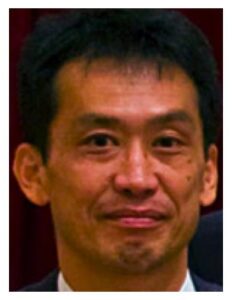Posted By: Kylee Spencer, PhD, Assistant Editor, AJHG
Each month, the editors of The American Journal of Human Genetics interview an author of a recently published paper. This month we check in with Shiro to discuss his recent paper “A novel CCDC91 isoform associated with ossification of the posterior longitudinal ligament of the spine works as a non-coding RNA to regulate osteogenic genes”.

KS: What motivated you to start working on this project?
SI: Ossification of the posterior longitudinal ligament of the spine (OPLL) is an intractable disease that causes spinal canal stenosis leading to myelopathy and/or radiculopathy. OPLL is a common disease. Its prevalence is more than 2% in East Asia. It is one of the leading causes of cervical surgery in Japan. I was an orthopedic surgeon 30 years ago. I saw in my clinic so many patients suffering from OPLL. I have been searching for good treatment and prevention methods for this terrible disease. I started the genomic study of OPLL as I believed that to discover its cause, i.e., the susceptibility genes, and to clarify its molecular pathogenesis is the fastest way.
KS: What about this paper/project most excites you?
SI: From identification of a locus to discovery of a gene is always a long and winding road. We succeeded in the OPLL GWAS 10 years ago and identified many susceptibility loci. But we could only identify one susceptibility gene from them. Here, we have finally discovered another OPLL gene, which works in an unusual way. At first sight, the OPLL-associated novel alternative splicing transcript encoded by the gene looks like a non-stop RNA and hence has no function. But, in vitro studies showed it is functional—it acts as a regulator of a group of osteogenic genes.
KS: Thinking about the bigger picture, what implications do you see from this work for the larger human genetics community?
SI: The AI-based statistical genetics method invented by my colleague, Dr. Koido, worked well. It pinpointed the novel transcription start site and unknown mRNA isoform related to the disease. The method helps shorten the time from GWAS (identification of loci) to gene (discovery of susceptibility gene and variant).
As mentioned above, the novel isoform looked like a non-stop RNA, but it was actually a tissue/cell type-specific non-coding RNA that regulates a group of genes related to bone formation—the lesson is that there is still much to be learned about the function of non-coding RNA. Combining statistical (brain) and experimental (muscle) work is important.
KS: What advice do you have for trainees/young scientists?
SI: Please be true to yourself in your life and your work.
KS: And for fun, tell us something about your life outside of the lab.
SI: I (aged 65) am still a rugby player running around the pitch every Sunday. How the rugby ball rolls is quite unpredictable, just like science (and life).
